After reading about the virtues of aniline dyes for years, I finally decided to take the plunge and try them out on a rustic grandmother clock that I inherited from my dad. The unfinished maple clock had been sitting in a barn for at least 25 years and over that time, the wood had darkened rather unevenly so a light “natural maple” finish wasn’t feasible. I realized some creative finish work was called for.
Conventional pigment-based oil stains have a tendency to produce blotches when applied to certain woods such as maple, pine, and cherry. I did indeed experience this when I tested out a red mahogany stain on the back of the clock. A gel stain fared somewhat better but the blotchiness was still noticeable. Plus, the gel stain was a bit of a pain to wipe off. That’s when I decided it was time to give aniline dyes a shot.
I ordered four different types of Transfast aniline dyes, made by Homestead Finishing Products. The dyes come in powder form in little one ounce vials that cost about $11 each. Although this seems (and indeed felt) pricey, each vial can make up to 2 quarts of dye so it’s actually less expensive than a conventional oil stain by about half.
My first task was to mix up small samples of each dye to get a feel for how each would look. I used a half teaspoon of dye powder with a 1/2 cup of water. The water was hot, per the manufacturer’s instructions, which allows the dye to dissolve better. After a thorough stirring and allowing the water to cool down a bit, each sample was applied to a small section of a test piece of maple using a foam sponge followed by a cotton rag to wipe off the excess. For some of the test sections, two coats were used.
Once the samples had dried, I was able to select a color that was closest to my target color. In this case, that color was Antique Cherry Brown. As noted in the instructions that came with the dye, the color of the powder is not indicative of the true color of the dye in solution. Attempting to choose a dye based solely on the color of the dye powder is asking for trouble. That was the first lesson learned.
Before applying the chosen dye to the clock, I first ran a damp sponge across the wood to raise the fibers. After waiting about 15 minutes for the water to dry, I sanded down the whiskers using 320 grit sandpaper and a nylon pad. It is important to do this step when working with water-based dyes in order to get a smooth final surface. Fortunately, the grain on maple doesn’t raise as much as other woods such as pine so it really take much effort or time.
Using a foam sponge, I applied the dye to the clock, waited about an hour for it to dry, and then applied a second coat. One thing I noticed right off the bat was that the dye really soaks into the wood. If you come back 5 minutes later to wipe off the excess on the surface, there really isn’t much to wipe. Certainly, much less than your average oil-based pigment oil stain. Note that if you wait this long, the dye will likely show lap marks. Best to keep the surface wet and wipe off before it dries. My other observation was that the color is much more uniform than that afforded by a pigment stain because the smaller dye particles penetrate evenly into the wood rather than unevenly collecting in certain areas such as the larger pores in the grain.
One of the tricky things about aniline dyes is that the color prior to applying the clear finish coat can look quite a bit different than the final color with the finish applied. Pre-finish, the dye will appear chalky or washed out and may even have a different color tint to it. This phenomena shows up quite clearly clearly in this photo of the floor clock taken outdoors – the wood almost resembles redwood. However, once the final urethane finish was applied, the wood takes on a decidedly browner cast, more like the antique cherry brown I was hoping for.
In some areas the color was a bit darker than planned, although this wasn’t really obvious until after the dye had dried. According to the instructions, if the color seems too dark, it can be lightened by wiping with water. Presumably, this can be done while the stain is being applied as well as after it has dried. Because the dye is water-soluble, a water-based clear finish could cause trouble due to the dye bleeding into the finish. One way to prevent this bleeding is to seal the dye with a seal coat of dewaxed shellac before applying clear finish. Or use an oil-based finish, which is what I did. After the clear finish coat was applied, I was quite pleased with the final result.
In summary, my first experience using water-soluble aniline dyes was a positive one and I definitely plan to use them again in the future. They offer several advantages over conventional oil-based pigment stains: far less fumes, more uniform grain penetration, fewer blotches, better bang for the buck, and longer shelf life. The biggest downsides are grain-raising and availability.
Aniline dyes are not available in most home improvement centers and paint stores. I checked the local Home Depot’s and Lowes and came up empty. You’re pretty much relegated to ordering them online. I ordered my dyes online from Rockler and it took about four days for them to arrive. A little bit of patience is needed. Also, it’s a good idea to purchase several colors to increase the odds of finding one you like. There are online color charts which are certainly helpful, but they’re no substitute for doing your own wood-specific tests. At $10+ each, figure on spending $30-$50 to get a starter collection of dyes that “bracket” your desired color choice. The good news is the dyes have an indefinite shelf life in dry powder form so they should last for many years.


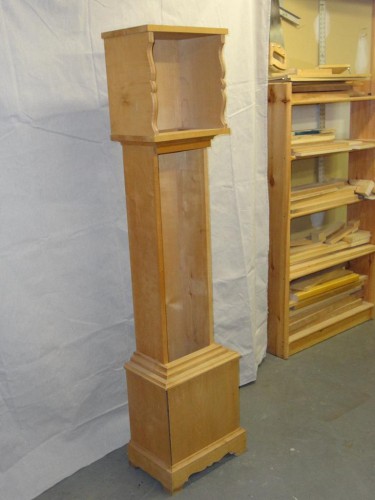
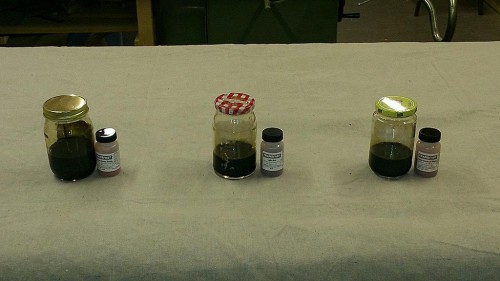
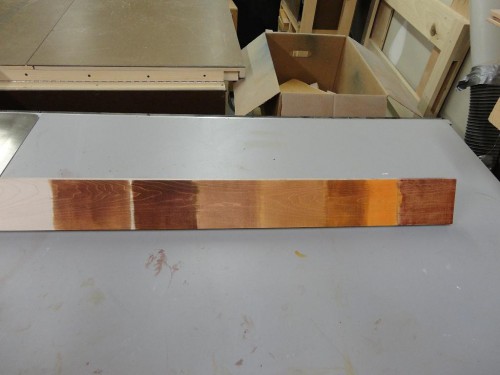
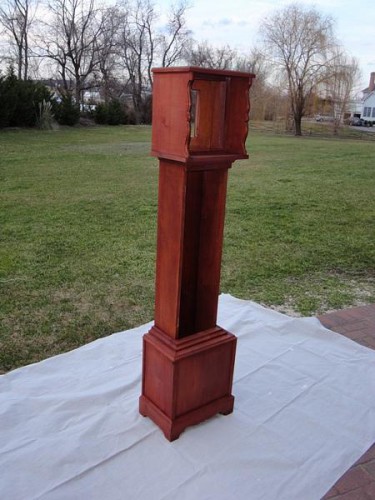
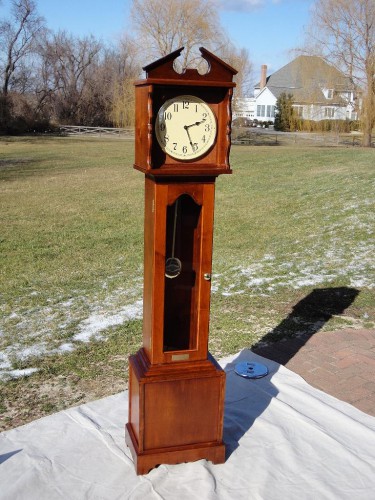
As far as brick and mortar availability: As of October, 2015 TransFast dyes are available at both Woodcraft and Rockler outlets. Woodcraft is in 34 states, Rockler in 20. Each main website has store locator functions.